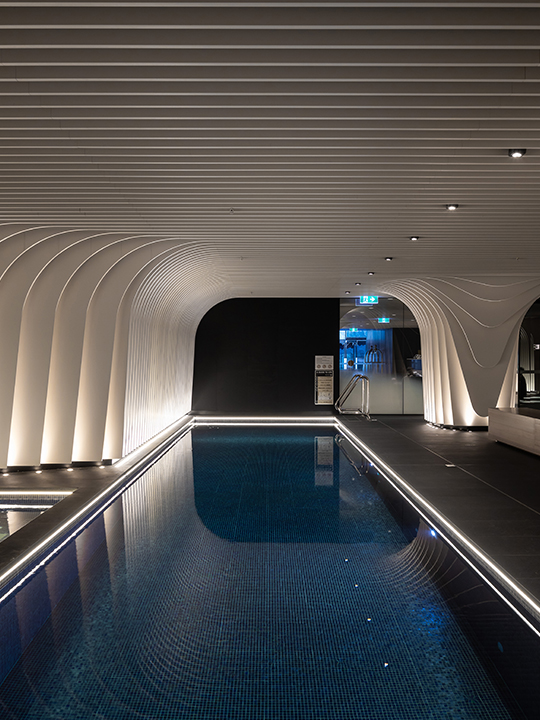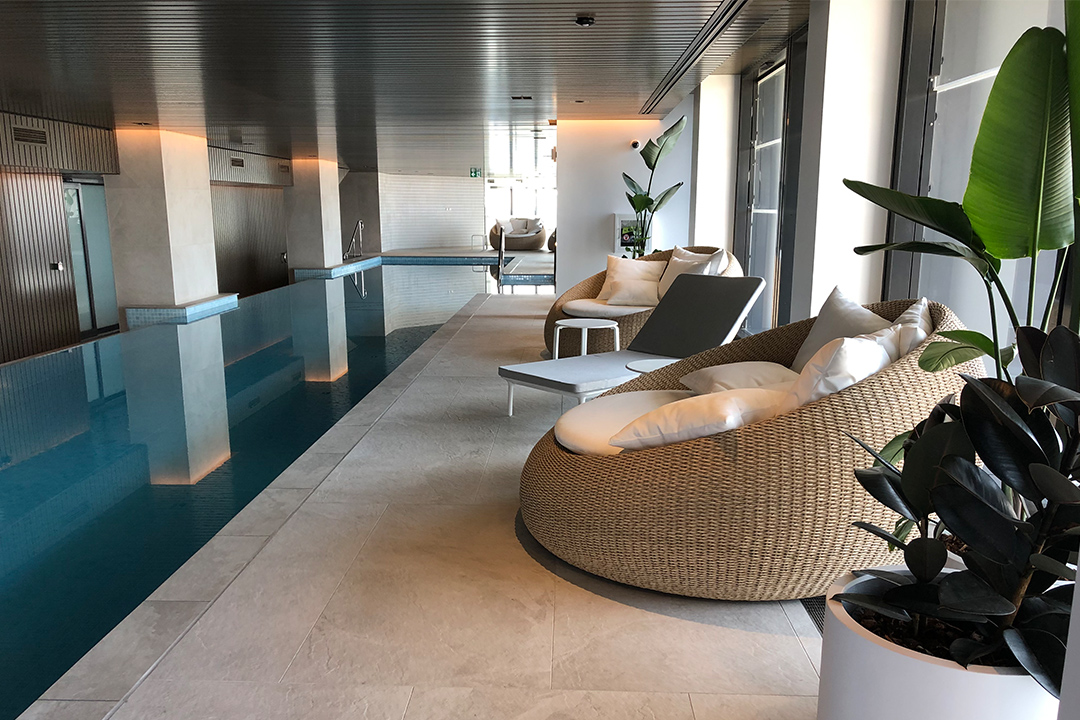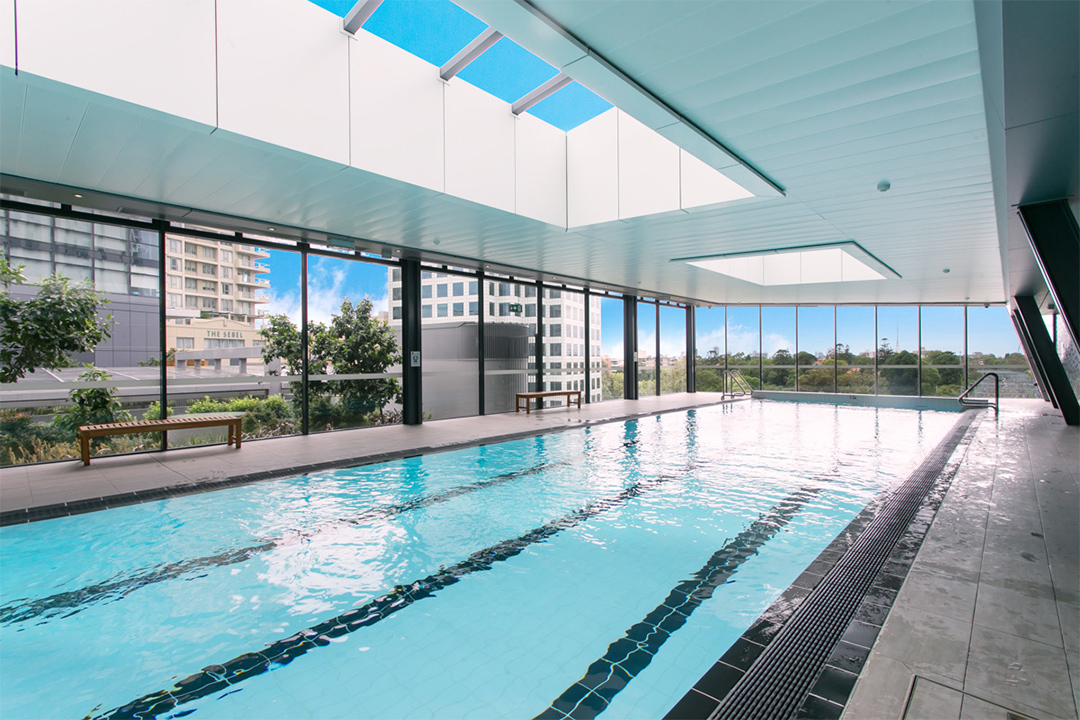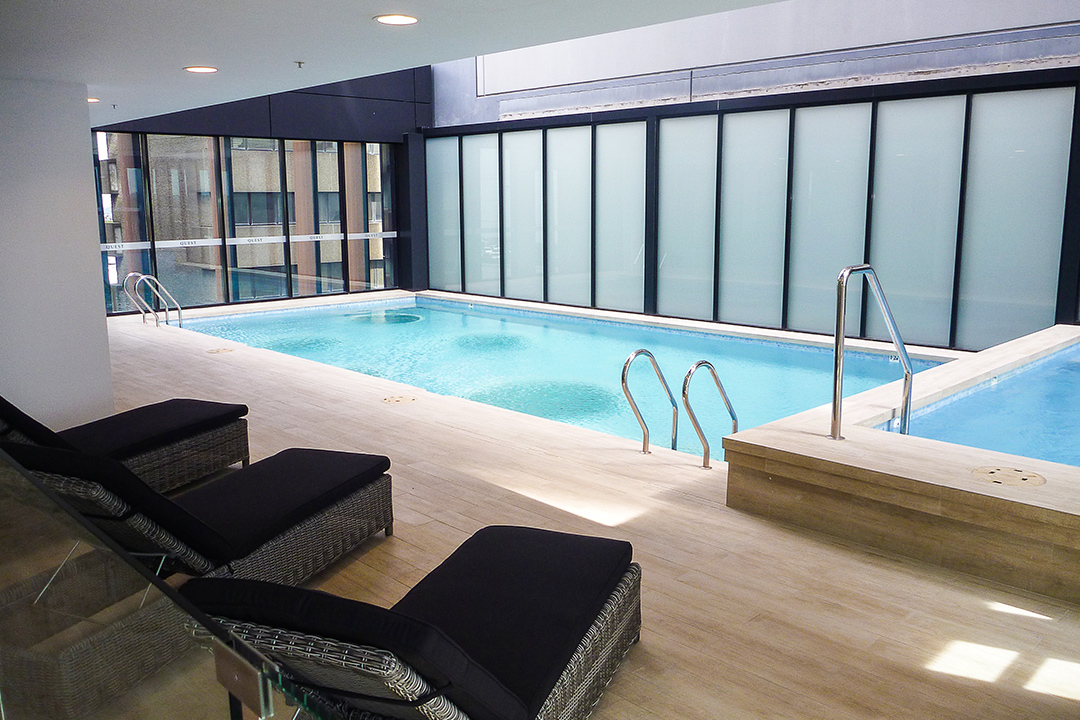The Inside Scoop On Indoor Pools
Now that the summer months have come to a close and daylight savings has well and truly ended, people are starting to move indoors, preparing for the cooler months. But that doesn’t necessarily mean our pools need to be abandoned. Here, Kirrily Ireland speaks with Andrew Rothery, sales and marketing manager of Crystal Pools, to find out everything Australians need to know about indoor pools, and why it’s worth considering one for your next home.

While they’re typically more common in recreational centres, resorts and accommodation places alike, indoor pools are not out of reach for the standard homeowner. They’re a welcome addition that provides family fun all year round, rain, hail or shine.
THE BENEFITS
Indoor pools come with a wealth of benefits on which outdoor pools tend to fall short. “Indoor pools are great,” Rothery says, “better temperature control allows for all year swimming as well as keeping out the elements.” Where continuous debris such as leaves and bugs inevitably contaminate outdoor pools, your indoor establishment will remain clean of these pollutants, which are deterred by four walls and a roof, meaning less maintenance in the long run. You won’t have to spend as much time scooping out detritus to keep the water clean, and since the sun can’t reach it, the chemicals won’t evaporate as quickly, either.
Before jumping into the pool, swimmers are usually burdened with arduously slapping sunscreen onto every exposed inch of skin, an important yet bothersome task that needs repeating every two hours or so, thus interrupting the fun. That is unless, of course, you are jumping into an indoor pool, where the sun and its harsh UV rays pose no problem. On a planet that is becoming increasingly hotter, spending extended periods of time out in the sun is inadvisable, as experts encourage people to stick to the shade as much as possible, even after following the other sunsafety provisions. Indoor pools are the perfect solution – whether you crave a splash on a 40-degree day, or in the dead of winter when it’s pelting down with rain, nothing is an obstacle. You’ll be just as protected as you are when you’re in your home.
SAFETY FIRST
When it comes to planning your indoor pool, the first step should be taking safety regulations into account for proper compliance. Rothery advises homeowners to “consider the total area you have to play with” and that “being indoors means you still need barriers to protect the entry to the pool”. If you plan to access your indoor pool from the outside, for example, you’ll still need a proper fence and gate to guard the entrance so that young children can’t walk through the door to the pool= area. It’s vital to research pool barrier requirements and work these into your plans for the safety of everyone using the pool.
Protection from the sun, while convenient, also poses a potential safety issue that you will need to consider for your indoor pool. Rothery points out that “lower sunlight levels can contribute to higher sanitisation requirements as you’re missing out on the UV sterilisation that contribute to maintaining the pool”. Another thing to factor into your planning is adequate ventilation since indoor pools accumulate heavy condensation, and the last thing you want is for heavy moisture levels to cause mold or even simply general discomfort. A mechanical ventilation system can be installed if your building does not have enough adequate natural ventilation.



PLAN WITH A PROFESSIONAL
If you’re in the middle of designing a new home, now is the time to incorporate an indoor pool into the initial plans. Indoor pools involve significant construction akin to building any other room in your home, so it’s ideal to have it built with the rest of the house. However, homeowners with existing outdoor pools can still experience the luxury of an indoor one. Rothery says, “This can be achieved but [will be] a little harder as the building structure needs to accommodate the pool construction.” Consult with an expert to see what your options are and be prepared for a full renovation.
The best part about adding an indoor pool from the start is that you can easily integrate it into the rest of the home’s design, but again, assimilating a new structure to match the rest of the dwelling is always possible, using similar materials, colours and finishes. “These types of pools can be integrated into most designs,” Rothery affirms, “so matching architectural style is always achievable.”
Once you know that you want to work an indoor pool into your new home, or add some extravagance to your current abode, the next step is to approach the right person for the job. “Most of the time you would use a concrete pool builder with experience working with other builders on these types of pools,” Rothery explains. “Conversely, choose a good builder that can work in conjunction with the pool company and understands how to build the structure to encase an indoor pool.”
Qualified builders will not only ensure that the construction of your indoor pool goes smoothly, but can also help with the design process. “Having your pool space designed by an experienced builder is especially important when it comes to indoor pools,” Rothery says. “Consideration of your room space and surrounds to access the pool will play a factor in the design phase. If room space is limited, a rectangular pool will provide more efficient use of a limited space.”
With professional help and an understanding of the basic requirements, an indoor pool could be an option for you. Significant construction will add extra costs, however the benefits of a clean, sun-smart pool that you can enjoy on any day of the year are worth it.
